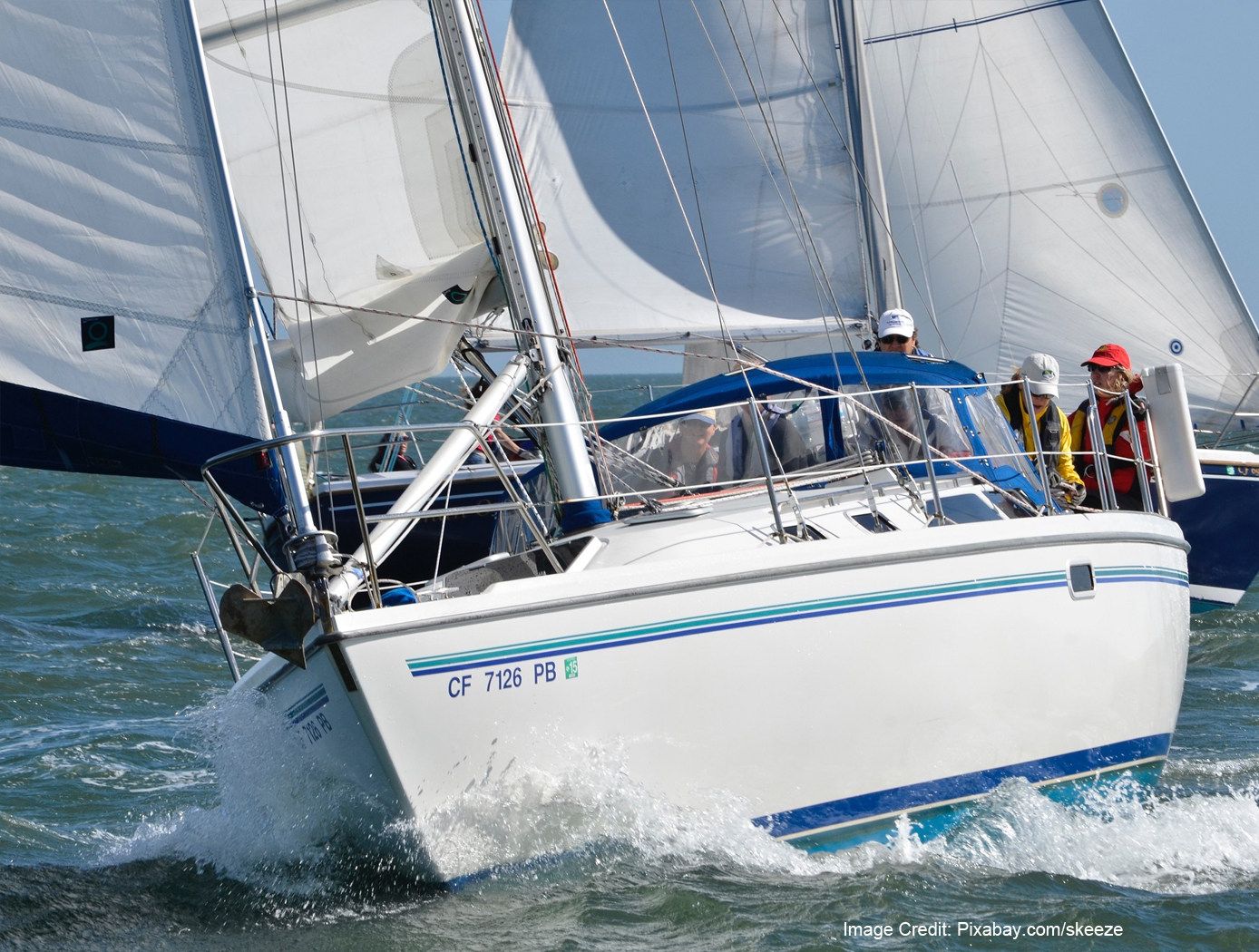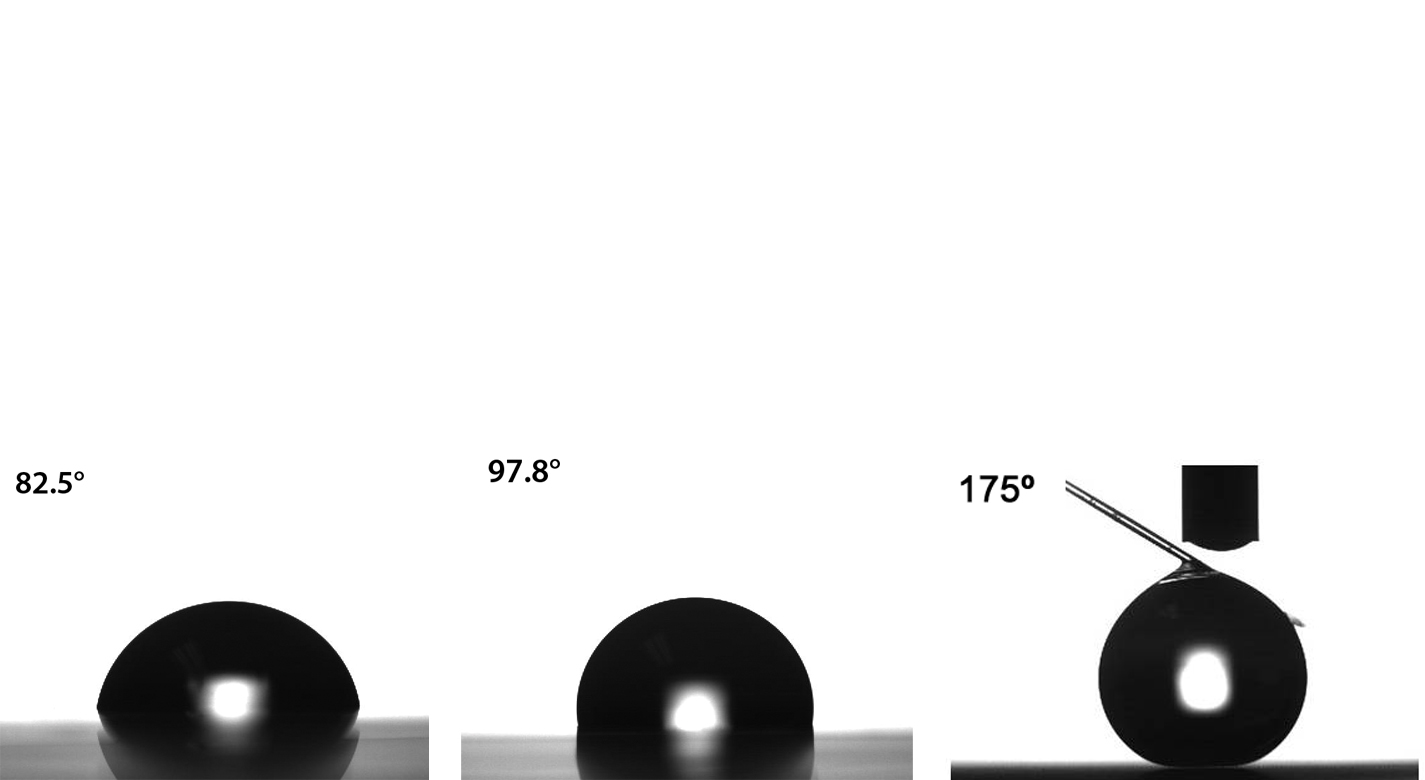Particle Contamination Mitigation Methods
materials and coatings
Particle Contamination Mitigation Methods (LAR-TOPS-97)
Unique surface properties such as increased hydrophobicity and self-cleaning
Overview
NASA's Langley Research Center researchers offer you methods for particle contamination mitigation. The methods were developed for exploration of surfaces such as Moon, Mars, and asteroids. During past missions, lunar dust caused an array of issues including compromised seals, clogged filters, abraded visors and space suit surfaces, and was a significant health concern. NASA's novel methods for particle contamination mitigation include both controlled chemical and topographical modifications. These methods offer a wealth of applications and commercial opportunities. The benefits include films, coatings, and surface treatments with antifouling, dust resistance, hydrophobic to superhydrophic, low adhesion/friction, and self-cleaning characteristics. NASA is seeking development partners.
The Technology
The following methods can be used individually or in combination to generate superhydrophobic surfaces:
Synthesis of novel copolyimide oxetanes with unique surface properties
The technology is the synthesis of a polyimide coating or film with a modified surface chemistry shown in Figure 1. A minor amount of an oxetane reactant containing fluorine is added to the polyimide, and the oxetane preferentially migrates to the surface, enabling relatively high concentrations of fluorine at the surface, without compromising the functional performance of the bulk of the polymide coating/film.
The copolymers exhibit mitigation of particle adhesion and fouling from exposure to various particulate and biological contaminants and exhibit reduced surface energy and increased surface fluorine content at extremely low oxetane loadings relative to the imide matrix (see Figure 2). Additionally, the short fluorinated carbon chains do not bioaccumulate, reducing the environmental impact of these materials.
Modifying surface energy via laser ablative surface patterning
This method uses a laser to create nanoscale patterns in the surface of a material to increase the hydrophobicity of the surface (see Figure 2). The benefits of hydrophobic surfaces include decreases in friction and increases in self-cleaning properties. This is an advantageous method of surface modification because it is fast and single-step, promises to be scalable, requires no chemicals, could be applied to a variety of materials, and does not require a planar surface for patterning.


Benefits
- Antifouling
- Dust resistant
- Hydrophobic to superhydrophobic
- Low adhesion/friction
- Self-cleaning
Applications
- Biological templating
- Biomedical devices
- Corrosion and stain resistance
- Drag reduction
- Reduced ice and water adhesion
- Reduced insect adhesion on aircraft/ automobiles
- Marine antifouling coatings
- Microfluidics
- Particle and biological contaminant mitigation
- Self-cleaning of many kinds of surfaces
- Sensors
- Surface-specific chemical sensing
Technology Details
materials and coatings
LAR-TOPS-97
LAR-17769-1
LAR-18026-1
LAR-17769-2
LAR-18026-2
LAR-18026-3
LAR-18026-4
Similar Results

Self-Cleaning Coatings for Space or Earth
The new transparent EDS technology is lighter, easier to manufacture, and operates at a lower voltage than current transparent EDS technologies. The coating combines an optimized electrode pattern with a vapor deposited protective coating of SiO2 on top of the electrodes, which replaces either polymer layers or manually adhered cover glass (see figure on the right). The new technology has been shown to achieve similar performances (i.e., over 90% dust clearing efficiency) to previous technologies while being operated at half the voltage.
The key improvement of the new EDS coating comes from an innovative method to successfully deposit a protective layer of SiO2 that is much thinner than typical cover glass. Using vapor deposition enables the new EDS to scale more successfully than other technologies that may require more manual manufacturing methods. The EDS here has been proven to reduce dust buildup well under vacuum and may be adapted for terrestrial uses where cleaning is done manually. The coatings could provide a significant improvement for dust removal of solar cells in regions (e.g., deserts) where dust buildup is inevitable, but water access is limited. The EDS may also be applicable for any transparent surface that must remain transparent in a harsh or dirty environment.
The related patent is now available to license. Please note that NASA does not manufacturer products itself for commercial sale.

Dust Accumulation Sensor Provides In Situ Monitoring
Previous techniques for measuring dust accumulation, mostly de-pendent on solar cell output, were limited by their inability to distin-guish dust effects from other factors like incident radiation and radiation damage. These techniques were less effective in environ-ments with inconsistent solar flux and future missions, such as the Lunar South Pole, and lacked versatility in adapting to diverse envi-ronmental conditions. The PADS device embraces success over these challenges, and reflects enhanced features over prior iterations to also allow for space environments.
Key design features begin with the customizable mechanical design of the PADS device for use in space environments, heaters with imbedded precision temperature sensors, a selected optical coating for the device coupons that are calibrated on high-fidelity thermal modeling and validated with ground-based testing to simulate the space environment of interest (including dusting with simulants representative of the planetary-body soil/regolith), and a control circuit for precision control/matching of the thermal inputs to the sensor via the heaters. Retainers with mount isolators are implemented to ensure the stacked layers within the device do not dislodge during high vibration or gravitational loads during launch.
For operation, the PADS device is installed at the point of interest (e.g., space vehicle surface, extraterrestrial equipment) to quantify dust accumulation. Power and data transfer are done through cabling to the space vehicle system or can be provided standalone. A control circuit/algorithm adjusts the power to the heaters to precisely match the temperature setpoints. Ground testing in the simulated space environment conditions of interest creates a calibration plot of effec-tive emittance versus dust density, and allows determination of the degradation in emittance as the dust increases on the surface.
Testing on the PADS device has been completed in a simulated lunar environment and data has been collected to enable sensor calibration for its use on the Moon. It is currently poised for integration into a lander for flight testing.
Although the PADS device is intended for use in a burgeoning space industry and requisite environments – but given that the PADS device is partially comprised of programmable sensors in conjunction with optically coated coupons that can be tailored for custom use - it or its constituent components could be modified for terrestrial applications such as surface dust monitoring on photovoltaic panels or potentially combustible dust on various industrial surfaces.

Alternative Transparent Coating Lotus Suitable for Optics with Vacuum Deposition Layer
In addition to previous LOTUS coating formulations, an additional optical formulation may be applied via vacuum deposition. This coating forms a top layer and may be applied in different thicknesses that serve to enhance its hydrophobic properties. The vacuum deposited material may comprise fluorinated ethylene propylene or a similar material. This coating is transparent and can be used on optical components or any other applications requiring a clear coating.

Self-Cleaning Seals
This NASA innovation applies the concepts of electrodynamic dust shielding (EDS) to develop seals (e.g., O-rings) with active self-cleaning capabilities. NASA’s self-cleaning seals are manufactured in the following manner: A seal with a conductive surface (or otherwise fabricated to be conductive) is generated and an electrical connection, lead or electrode is attached. Next, a dielectric material is coated or placed over the conductive surface of the seal. (NOTE: Using conductive elastomer materials eliminates the need for a conductive cover layer) A high voltage (nominally >1kV) power supply is connected to the conductive layer on the seal and grounded to the metallic groove or gland that houses the seal.
Given the design, dust accumulates on the outer dielectric layer (a high-voltage insulator) of the seal. To clean the seal, a time varying alternating voltage is applied from the power supply, through the high voltage lead and onto the conductive layer of the seal. When this voltage is applied, the resulting electric field produces Coulomb and dielectrophoretic forces that cause the dust to be repelled from the sealing surface. In practice, NASA’s self-cleaning seals could be operated in continuous cleaning mode (actively repelling dust at all times, preventing it from ever contacting the seal surface) or in a periodic cleaning cycle mode (removing dust from the seal surface at regular intervals).
NASA’s self-cleaning seals have been prototyped and demonstrated to be highly effective at dust removal. The invention could serve as the basis of an active, self-cleaning seal product line marketed for in-space and/or terrestrial applications. Additionally, companies developing space assets destined for operation on dusty planetary surfaces (e.g., the Moon) may be interested in leveraging the technology to protect seals from dust/regolith accumulation, ensuring continuous low leakage operations.

Dust-Repelling Coating for Thermal Radiators
State-of-the-art (SOTA) EDS technology includes the addition of a dielectric substrate, the EDS electrodes, and a dielectric cover layer. Typically, this multilayer stack-up for thermal radiator EDSs are built as a stand-alone and placed directly on top of the thermal radiator base and covered with the thermal control material. This new coating system represents an alternative EDS approach that integrates with the thermal radiator's thermal control coating system. The approach involves utilizing the thermal control coating in multiple functional capacities within the EDS configuration. The thermal control coating properties are leveraged to provide electrical insulation characteristics suitable for EDS operation while maintaining thermal performance requirements.
The EDS configuration incorporates conductive elements positioned within the thermal control coating structure. The thermal control coating is applied using processes compatible with standard thermal radiator construction methods. The conductive elements are integrated during the coating application sequence. This integrated EDS approach incorporated into a thermal radiator system reduces certain components compared to SOTA EDS systems. The reduction in components offers potential benefits in system mass, thermal performance characteristics, and manufacturing complexity. The approach may reduce certain failure modes associated with interface layers and thermal expansion effects. This EDS configuration allows for enhanced flexibility in thermal radiator design parameters.



